 W
W1 Squadron SAAF was an air force squadron of the South African Air Force and was formed at Air Force Station Swartkop in February 1920, equipped with De Havilland DH.9's part of the Imperial Gift donation to South Africa by Britain. On 31 August 1939 the squadron was re-designated as 1 Bomber/Fighter Squadron and this was then changed to 11 (Bomber) Squadron in December 1939. The squadron was resurrected in February 1940 by the renumbering of 6 Squadron, equipped with four Hurricane Mk 1's and six Furies.
 W
W1 SWASpes was part of the South West African Territorial Force.
 W
WThe 1st Infantry Battalion of the Royal Netherlands East Indies Army was a Dutch colonial military unit that was active in the Dutch East Indies during World War II and the Indonesian National Revolution.
 W
WThe 5th Air Force Division, was a division of the Bundeswehr's German Air Force. It was located from 1963 to 1971 in Birkenfeld and from 1990 to 1994 in Strausberg (Eggersdorf). It was the successor of the Kommando LSK/LV.
 W
WThe 2nd Mechanized Brigade is a subordinate component of the Ground Forces of the Slovak Republic. The headquarters of the 2nd Mechanized Brigade is located in Prešov.
 W
W32 Battalion was a light infantry battalion of the South African Army founded in 1975, composed of black and white commissioned and enlisted personnel. It was disbanded on 26 March 1993.
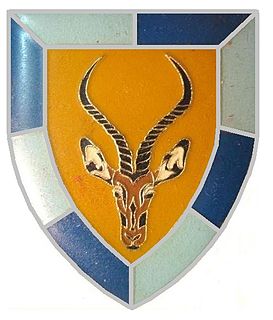 W
W102 Battalion (pronounced as one-o-two Battalion) was a quick-reaction unit of the South West African Territorial Force. The battalion lost 36 men.
 W
W101 Battalion (pronounced as one-o-one Battalion) was a quick-reaction unit of the South West African Territorial Force, composed of black and white commissioned and enlisted personnel.
 W
W301 Battalion was part of Sector 30 of the South West African Territorial Force.
 W
WThe 519th Fighter-Interceptor Squadron is an inactive United States Air Force unit. Its last assignment was with the 521st Air Defense Group at Sioux City Municipal Airport, Iowa, where it was inactivated on 18 August 1955. The squadron was first activated during World War II as the 637th Bombardment Squadron, a dive bomber unit, but was disbanded before participating in combat in a general reorganization of Army Air Forces training units. It was reconstituted during the Cold War as a fighter interceptor unit supporting the air defense of the United States.
 W
WThe 530th Combat Crew Training Squadron is an inactive United States Air Force unit. It was last assigned to the 380th Bombardment Wing at Plattsburgh Air Force Base, New York, where it was inactivated on 1 July 1991.
 W
WThe 531st Bombardment Squadron was a unit of the US Air Force, first activated during World War II. After training as a heavy bomber unit in the United States, it moved to the Southwest Pacific Theater, entering combat in May 1943, flying combat missions from Australia while attached to the Royal Australian Air Force, earning two Distinguished Unit Citations and a Philippine Presidential Unit Citation. In 1945 it moved forward to the Philippines, then to Okinawa. Following V-J Day, the squadron returned to the Philippines and was inactivated there in February 1946.
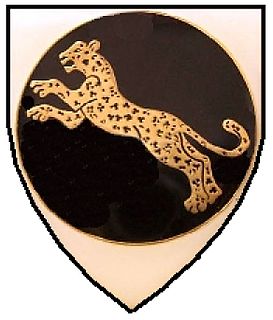 W
W911 Battalion was part of the South West African Territorial Force's 91 Brigade.
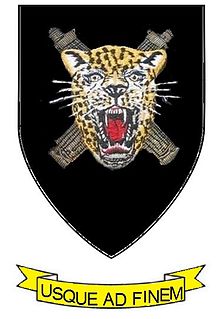 W
WRegiment Erongo was a quick-reaction unit of the South West African Territorial Force.
 W
W913 Battalion was part of 91 South West African Brigade.
 W
WHeadquarters Allied Force Command Heidelberg was a formation of the North Atlantic Treaty Organization (NATO) responsible for providing deployable joint staff elements (DJSE) in support of NATO operations worldwide. It was headquartered at Campbell Barracks, Germany, and reported to the Joint Force Command Brunssum (JFCBS). During the War on Terrorism, it provided command and control elements to the International Security Assistance Force (ISAF). It was disbanded on 1 April 2013.
 W
WThe Blueshirts was the Falangist paramilitary militia in Spain. The name refers to the blue uniform worn by members of the militia. The colour blue was chosen for the uniforms in 1934 by the FE de las JONS because it was, according to José Antonio Primo de Rivera, "clear, whole, and proletarian," and is the colour typically worn by workers, as the Falange sought to gain support among the Spanish working class. In Francoist Spain the Blueshirts were officially reorganized and officially renamed the Falange Militia of the FET y de las JONS in 1940.
 W
WThe Bophuthatswana Defence Force (BDF) was established on 6 December 1977 from trainees of South African Defence Force. It was the defence force of the Republic of Bophuthatswana, a nominally independent bantustan during the Apartheid era of South Africa.
 W
WThe Cape Town Rifles (Chief Langalibalele Rifles is an infantry regiment of the South African Army. As a reserve unit, it has a status roughly equivalent to that of a British Army Reserve or United States Army National Guard unit.
 W
WCivilian Irregular Defense Group program was a program developed by the U.S. government in the Vietnam War to develop South Vietnamese irregular military units from minority populations.
 W
WThe 12th Cuirassier Regiment is an armoured cavalry (tank) regiment of the French Army. It provides the armoured component of the 2nd Armoured Brigade. Currently stationed at Quartier Valmy, Olivet, France.
 W
WThe Czechoslovak Air Force or the Czechoslovak Army Air Force was the air force branch of the Czechoslovak Army formed in October 1918. The armed forces of Czechoslovakia ceased to exist on 31 December 1992. By the end of the year, all aircraft of the Czechoslovak Air Force were divided between the Czech Air Force and the Slovak Air Force.
 W
WThe Durban Light Infantry is a Motorised Infantry regiment of the South African Army. It lost its status as a Mechanised infantry regiment in 2010 in line with the rationalisation of resources. As a reserve unit, it has a status roughly equivalent to that of a British Army Reserve or United States Army National Guard unit.
 W
WThe Khmer National Armed Forces were the official armed defense forces of the Khmer Republic, a short-lived state that existed from 1970 to 1975, known today as Cambodia. The FANK was the successor of the Royal Khmer Armed Forces which had been responsible for the defense of the previous Kingdom of Cambodia since its independence in 1954 from France.
 W
WThe Patriotic Guards were Romanian paramilitary formations formed during the Communist era, designed to provide additional defence in case of a foreign attack.
 W
WThe Queen's Royal Irish Hussars, abbreviated as QRIH, was a cavalry regiment of the British Army formed from the amalgamation of the 4th Queen's Own Hussars and the 8th King's Royal Irish Hussars in 1958. The regiment saw active service against insurgents in Aden; during the Indonesia–Malaysia confrontation and during the Gulf War, as well as regular service in West Germany as part of the British Army of the Rhine. The regiment was amalgamated with the Queen's Own Hussars to form the Queen's Royal Hussars on 1 September 1993.
 W
WRegiment Paul Kruger is a South African Army reserve motorised infantry unit named after former Zuid Afrikaanse Republiek president, Paul Kruger.
 W
WThe Iraqi Republican Guard was a branch of the Iraqi military from 1964 to 2003, primarily during the presidency of Saddam Hussein. It later became the Republican Guard Corps, and then the Republican Guard Forces Command (RGFC) with its expansion into two corps. The Republican Guard was disbanded in 2003, after the invasion of Iraq by a U.S.-led international coalition.
 W
WThe Royal Cambodian Armed Forces, is Cambodia's national military force. The Supreme Commander-in-Chief is King Norodom Sihamoni. Since 2018, General Vong Piseng has been the Commander-in-Chief of the RCAF as head of the Army, Navy, Air Force and the Gendarmerie. The armed forces operate under the jurisdiction of the Ministry of National Defence. Under the country's constitution, the RCAF is charged with protecting the sovereignty and territorial integrity of the Kingdom of Cambodia.
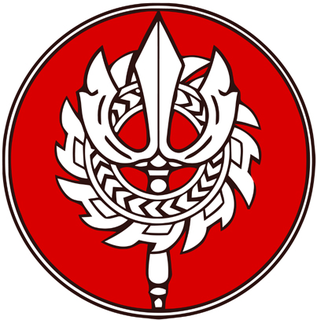 W
WThe Royal Lao Armed Forces, best known by its French acronym FAR, were the official armed defense forces of the Kingdom of Laos, a state that existed from 1949 to 1975 in what is now the Lao People's Democratic Republic. The FAR was responsible for the defense of the Kingdom since its independence in October 1953 from France.
 W
WThe Royal Netherlands East Indies Army Air Force was the air arm of the Royal Netherlands East Indies Army in the Dutch East Indies from 1939 until 1950. It was an entirely separate organisation from the Royal Netherlands Air Force.
 W
WThe Royal Netherlands East Indies Army was the military force maintained by the Netherlands in its colony of the Netherlands East Indies, in areas that are now part of Indonesia. The KNIL's air arm was the Royal Netherlands East Indies Army Air Force. Elements of the Royal Netherlands Navy were also stationed in the Netherlands East Indies.
The Royal Observer Corps (ROC) was a civil defence organisation intended for the visual detection, identification, tracking and reporting of aircraft over Great Britain. It operated in the United Kingdom between 29 October 1925 and 31 December 1995, when the Corps' civilian volunteers were stood down. Composed mainly of civilian spare-time volunteers, ROC personnel wore a Royal Air Force (RAF) style uniform and latterly came under the administrative control of RAF Strike Command and the operational control of the Home Office. Civilian volunteers were trained and administered by a small cadre of professional full-time officers under the command of the Commandant Royal Observer Corps; latterly a serving RAF Air Commodore.
 W
W44 Parachute Brigade was a parachute infantry brigade of the South African Army. It was founded on 20 April 1978, by Colonel Jan Breytenbach, following the disbandment of 1 SA Corps and the battle of Cassinga. Upon formation, the brigade was commanded by Brigadier M. J. du Plessis, who was assigned the task of establishing by working with the Parachute Staff Officer, Colonel Jan Breytenbach. At the time du Plessis was the commanding officer of the Orange Free State Command and had previous experience serving in 1 Parachute Battalion. Breytenbach had also been a member of 1 Parachute Battalion and had also founded the South African Special Forces Brigade and 32 Battalion. The location that was chosen for the brigade's headquarters was in the lines of the OFS Cmd Headquarters, next to the old Tempe Airfield in Bloemfontein.
 W
WThe South African Defence Force (SADF) comprised the South African armed forces from 1957 until 1994. Shortly before the state reconstituted itself as a republic in 1961, the former Union Defence Force was officially succeeded by the SADF, which was established by the Defence Act of 1957. The SADF, in turn, was superseded by the South African National Defence Force in 1994.
 W
WThe South West Africa Territorial Force (SWATF) was an auxiliary arm of the South African Defence Force (SADF) and comprised the armed forces of South West Africa from 1977 to 1989. It emerged as a product of South Africa's political control of the territory which was granted to the former as a League of Nations mandate following World War I.
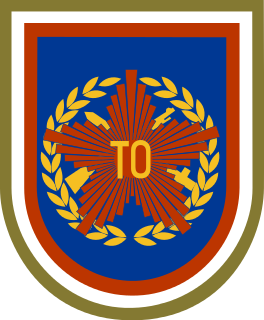 W
WThe Territorial Defense was a component of the armed forces of the former Socialist Federal Republic of Yugoslavia that was the primary means of organized armed resistance against an enemy under the Constitution of Yugoslavia. The forces acted as a Home or National Guard which roughly corresponded to a military reserve force or an official governmental paramilitary. Similar to the US National Guard, each of the Yugoslav constituent republics had its own Territorial Defense military formations, to remain separate from the Yugoslav People's Army (JNA), which also maintained its own reserve forces and could take command of Territorial Defense in case of war. This would be done under the command of the Presidency of Yugoslavia as Supreme Commander of Armed Forces through the Secretary of Defense, who was the highest military rank that could command both Yugoslav People's Army and Territorial Defense simultaneously under the constitution. While the President of Yugoslavia was in function he was under constitution supreme commander of armed forces, including the JNA and TO, and he could also pass duties as supreme commander to secretary of defense.
 W
WThiepval Barracks in Lisburn, County Antrim, is the headquarters of the British Army in Northern Ireland and its 38th (Irish) Brigade.
 W
WThe Transkei Defence Force (TDF) was established during March 1981, from the 141 Battalion of the South African Defence Force (SADF). It was the defence force of the Republic of Transkei, a nominally independent bantustan during the Apartheid era of South Africa.
 W
WThe Turkish Brigade was a Turkish Army Infantry Brigade that served with the United Nations Command during the Korean War between 1950 and 1953. Attached to the U.S. 25th Infantry Division, the Turkish Brigade fought in several actions and was awarded Unit Citations from Korea and the United States after fighting in the Battle of Kunuri. The Turkish Brigade developed a reputation for its fighting ability, stubborn defense, commitment to mission, and bravery.
 W
WThe Venda Defence Force (VDF) was established in September 1982 from the 112 Battalion of the South African Defence Force and the military branch of the Venda National Force which itself had been formed when the Venda homeland became independent from South Africa in September 1979.
 W
WThe Air Force and Air Defence, was one of three branches of the Yugoslav People's Army, the Yugoslav military. Commonly referred-to as the Yugoslav Air Force, at its height it was among the largest in Europe. The branch was disbanded in 1992 after the Breakup of Yugoslavia.
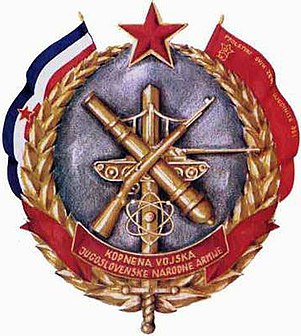 W
WThe Yugoslav Ground Forces was the ground forces branch of the Yugoslav People's Army (JNA) from 1 March 1945 until 20 May 1992 when it became the Ground Forces of Serbia and Montenegro under the threat of sanctions.
 W
WThe Yugoslav Navy, was the navy of Yugoslavia from 1945 to 1992. It was essentially a coastal defense force with the mission of preventing enemy landings along Yugoslavia's rugged 4,000-kilometer shoreline or coastal islands, and contesting an enemy blockade or control of the strategic Strait of Otranto.
 W
WThe Yugoslav People's Army, also called the Yugoslav National Army, was the military of Yugoslavia from 1945 to 1992 and primary part of Yugoslavia armed forces.